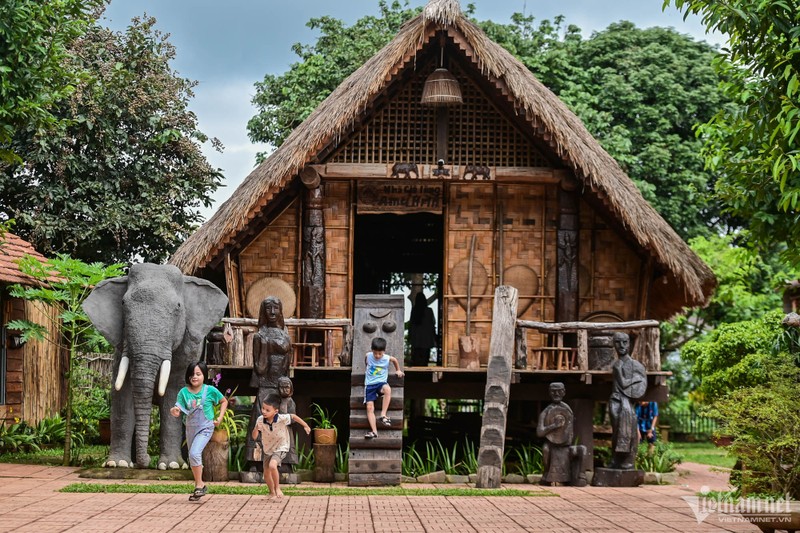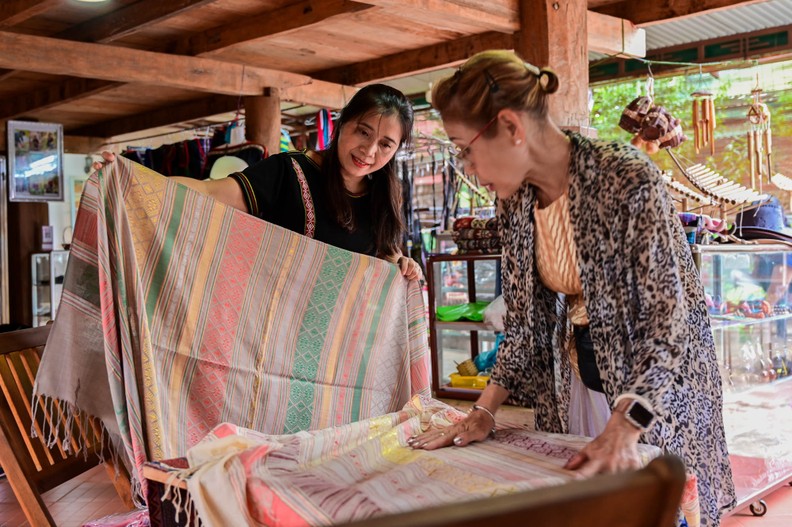In the heart of Buon Ma Thuot City in Dak Lak Province, Ako Dhong Village is a must-visit destination for tourists who want to explore the authentic culture of the Ede ethnic group.

Ako Dhong Village is a must-visit destination for tourists who want to explore the authentic culture of the Ede ethnic group (Photo: vietnamnet.vn)
As the first village to be recognised as a community-based tourist site in Dak Lak Province, Ako Dhong is home to many cultural characteristics of the Ede people, such as traditional long stilt houses, gong culture, and wooden sculptures.
Ako Dhong Village, also known as Co Thon Village, is located in Tan Loi Ward at the heart of Buon Ma Thuot City.
It was established by the Ede people in 1956. Initially, the village was located at the confluence of six streams namely Ea Dinh, Ea Dung, Ea Pui, Ea Giang, Ea Nuôl, and Thun M'Nung.
The name “Ako Dhong” means “village at the confluence of the streams” in the Ede ethnic language, with “Ako” meaning “confluence” and “Dhong” meaning “stream”.
Covering over 62 hectares, the village has nearly 290 households with more than 1,220 residents, including 64 Ede ethnic households.
This picturesque village has been safeguarded by its residents through many generations, which can be seen through well-preserved gong sets, musical instruments, and traditional crafts such as brocade weaving and making rice wine.
To preserve and promote the rich cultural heritage of ethnic communities in line with the national target programme on socio-economic development in ethnic minority and mountainous regions, the villagers have found a way to harmoniously balance preservation, development, and cultural promotion through community-based tourism.
Despite urbanisation, the village still maintains more than 30 traditional long stilt houses, which are cultural symbols for the Ede people. These houses not only provide accommodation for families but also serve as cultural venues to host traditional rituals.

On average, the village welcomes about 500 to 1,000 tourists each month (Photo: vietnamnet.vn)
The wooden roof and walls appear sturdy despite the passage of time, with wooden staircases being carved in the shape of a mother's breast and a crescent moon, reflecting the long-standing matriarchal traditions.
At the entrance of the village, the Arul cultural and culinary space stands out, operated by the descendants of Ama Hrin.
The owners have modernised some details of their traditional long stilt house while maintaining the original architecture and materials.
Ede people account for about 90% of the staff, who prepare local specialties like charcoal-roasted coffee, grilled chicken, bamboo rice, bitter melon soup, and banana flower salad.
It's ideal to spend a night in a long stilt house or one of the charming bungalows under the trees in the village. Additionally, visitors can experience cultural performances and re-enactments of gong culture at the long stilt houses of Ama Pi and Ama Nhien.
In early March 2023, Ako Dhong was recognised by the provincial Department of Culture, Sports, and Tourism as the first community-based tourism village in Dak Lak Province.
On average, the village welcomes about 500 to 1,000 tourists each month, who come to learn more about the traditional culture and life of the Ede people.
The available potential and efforts of villagers have boosted tourism activities in the Ako Dhong, contributing to improving the livelihoods and increasing income of local community while preserving and promoting the rich cultural heritage of the Ede ethnic group.